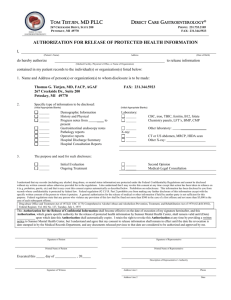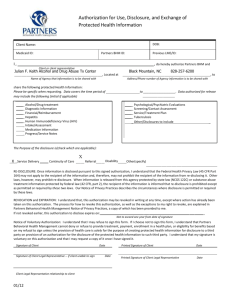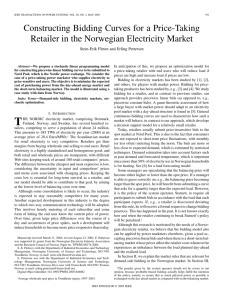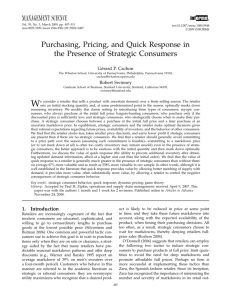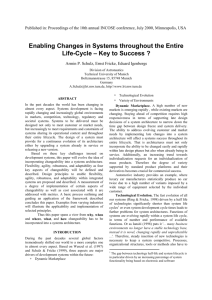Supplementary Specification
advertisement
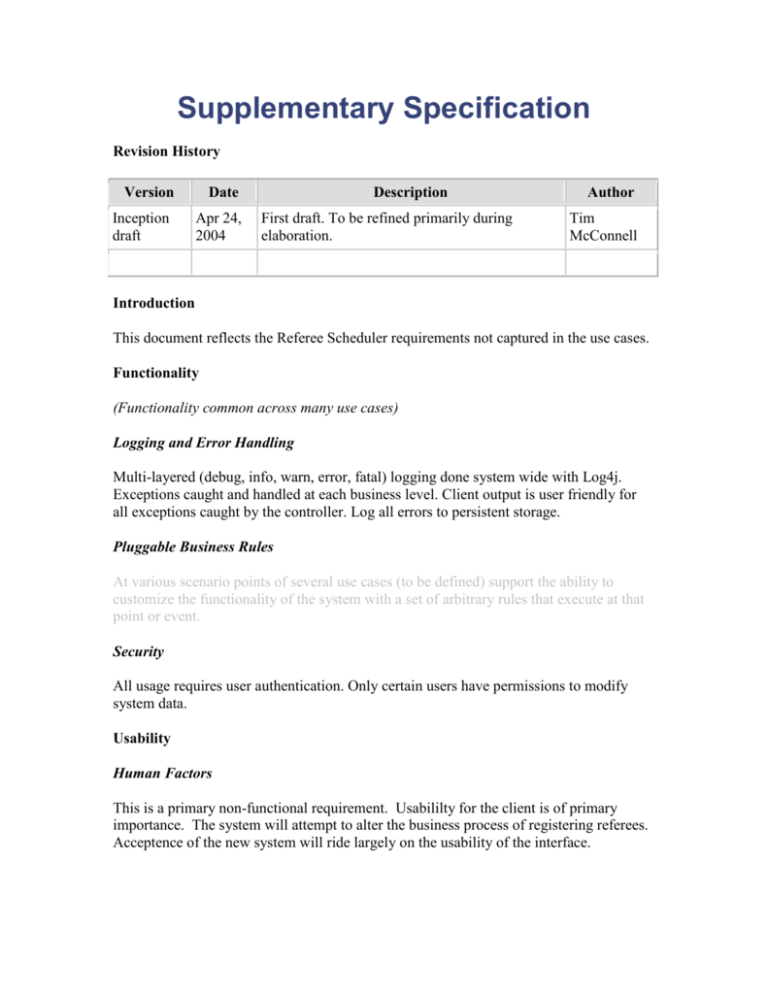
Supplementary Specification Revision History Version Inception draft Date Apr 24, 2004 Description First draft. To be refined primarily during elaboration. Author Tim McConnell Introduction This document reflects the Referee Scheduler requirements not captured in the use cases. Functionality (Functionality common across many use cases) Logging and Error Handling Multi-layered (debug, info, warn, error, fatal) logging done system wide with Log4j. Exceptions caught and handled at each business level. Client output is user friendly for all exceptions caught by the controller. Log all errors to persistent storage. Pluggable Business Rules At various scenario points of several use cases (to be defined) support the ability to customize the functionality of the system with a set of arbitrary rules that execute at that point or event. Security All usage requires user authentication. Only certain users have permissions to modify system data. Usability Human Factors This is a primary non-functional requirement. Usabililty for the client is of primary importance. The system will attempt to alter the business process of registering referees. Acceptence of the new system will ride largely on the usability of the interface. The Maintainability and extensibility of the product from an implementers view is also of primary importance, since it is quite likely that this project will be extended/finished/improved in the future by either a private consulting company or by future Europa/CIS 758 students. Therefore the syste architecture must be clean, explicitly documented, understandable, and easy to modify/extend. Reliability Recoverability All exceptions will be properly handled so that the user will be directed to a familiar (not frequent), friendly error page. Problematic transactions will not be committed. NOTE: What do we do for this? If there is failure to use external services (payment authorizer, accounting system, ...) try to solve with a local solution (e.g., store and forward) in order to still complete a sale. Much more analysis is needed here... Performance In order for the user experience to be as smooth as possible, the majority of page loads should happen in less than one second. Some flexibility is acceptable for pages with large queries, but these should be minimized however possible. As mentioned under human factors, buyers want to complete sales processing very quickly. One potential bottleneck is external payment authorization. Our goal is to achieve authorization in less than1 minute, 90% of the time. Supportability Adaptability The persistence mechanism should be flexible enough to accommodate changes in resource location without requiring reworking of other parts of the system. Core business functionality should be encapsulated in a layer that is not dependent on the presentation interface. Configurability Where possible, separate mechamism from policy to allow for flexible policy changes. Implementation Constraints 10 week total project time. Purchased Components Host? Free Open Source Components In general, we recommend maximizing the use of free Java technology open source components on this project. Although it is premature to definitively design and choose components, we suggest the following as likely candidates: Tomcat 5 Struts 1.1 Hibernate 2.1 Log4j 1.2.8 Ant 1.5 Eclipse 3.0 Stream MySQL 4.0.18 XSLT? Velocity? Interfaces Noteworthy Hardware and Interfaces Any modern web browser for the client view A reasonably equipped server with a dedicated internet connection open on port 8080 Touch screen monitor (this is perceived by operating systems as a regular monitor, and the touch gestures as mouse events) Barcode laser scanner (these normally attach to a special keyboard, and the scanned input is perceived in software as keystrokes) Receipt printer Credit/debit card reader Signature reader (but not in release 1) Software Interfaces For most external collaborating systems (tax calculator, accounting, inventory, ... ) we need to be able to plug in varying systems and thus varying interfaces. Domain (Business) Rules ID Rule Changeability RULE1 Signature required Buyer "signature" will continue to be for credit payments. required, but within 2 years most of our customers want signature capture Source The policy of virtually all credit ID Rule Changeability on a digital capture device, and within 5 years we expect there to be demand for support of the new unique digital code "signature" now supported by USA law. Source authorization companies. RULE2 Tax rules. Sales High. Tax laws change annually, at all require added taxes. government levels. See government statutes for current details. law RULE3 Credit payment Low reversals may only be paid as a credit to the buyer's credit account, not as cash. credit authorization company policy RULE4 Purchaser discount rules. Examples: High. Each retailer uses different rules. Retailer policy. Employee— 20% off. Preferred Customer— 10% off. Senior— 15% off. RULE5 Sale (transactionlevel) discount rules. Applies to pre-tax total. Examples: 10% off if total greater than $100 USD. 5% off each Monday. 10% off all sales between 10am and High. Each retailer uses different rules, Retailer policy. and they may change daily or hourly. ID Rule Changeability Source 3pm today. Tofu 50% off from 9am-10am today. RULE6 Product (line item level) discount rules. Examples: High. Each retailer uses different rules, Retailer policy. and they may change daily or hourly. 10% off tractors this week. Buy 2 veggieburgers, get 1 free. Legal Issues Are we in any place to pretend we can make this an issue? We recommend some open source components if their licensing restrictions can be resolved to allow resale of products that include open source software. All tax rules must, by law, be applied during sales. Note that these can change frequently. Information in Domains of Interest Pricing In addition to the pricing rules described in the domain rules section, note that products have an original price, and optionally a permanent markdown price. A product's price (before further discounts) is the permanent markdown price, if present. Organizations maintain the original price even if there is a permanent markdown price, for accounting and tax reasons. Credit and Debit Payment Handling When an electronic credit or debit payment is approved by a payment authorization service, they are responsible for paying the seller, not the buyer. Consequently, for each payment, the seller needs to record monies owing in their accounts receivable, from the authorization service. Usually on a nightly basis, the authorization service will perform an electronic funds transfer to the seller's account for the daily total owing, less a (small) per transaction fee that the service charges. Sales Tax Sales tax calculations can be very complex, and regularly change in response to legislation at all levels of government. Therefore, delegating tax calculations to thirdparty calculator software (of which there are several available) is advisable. Tax may be owing to city, region, state, and national bodies. Some items may be tax exempt without qualification, or exempt depending on the buyer or target recipient (for example, a farmer or a child). Item Identifiers: UPCs, EANs, SKUs, Bar Codes, and Bar Code Readers The NextGen POS needs to support various item identifier schemes. UPCs (Universal Product Codes), EANs (European Article Numbering) and SKUs (Stock Keeping Units) are three common identifier systems for products that are sold. Japanese Article Numbers (JANs) are a kind of EAN version. SKUs are completely arbitrary identifiers defined by the retailer.



